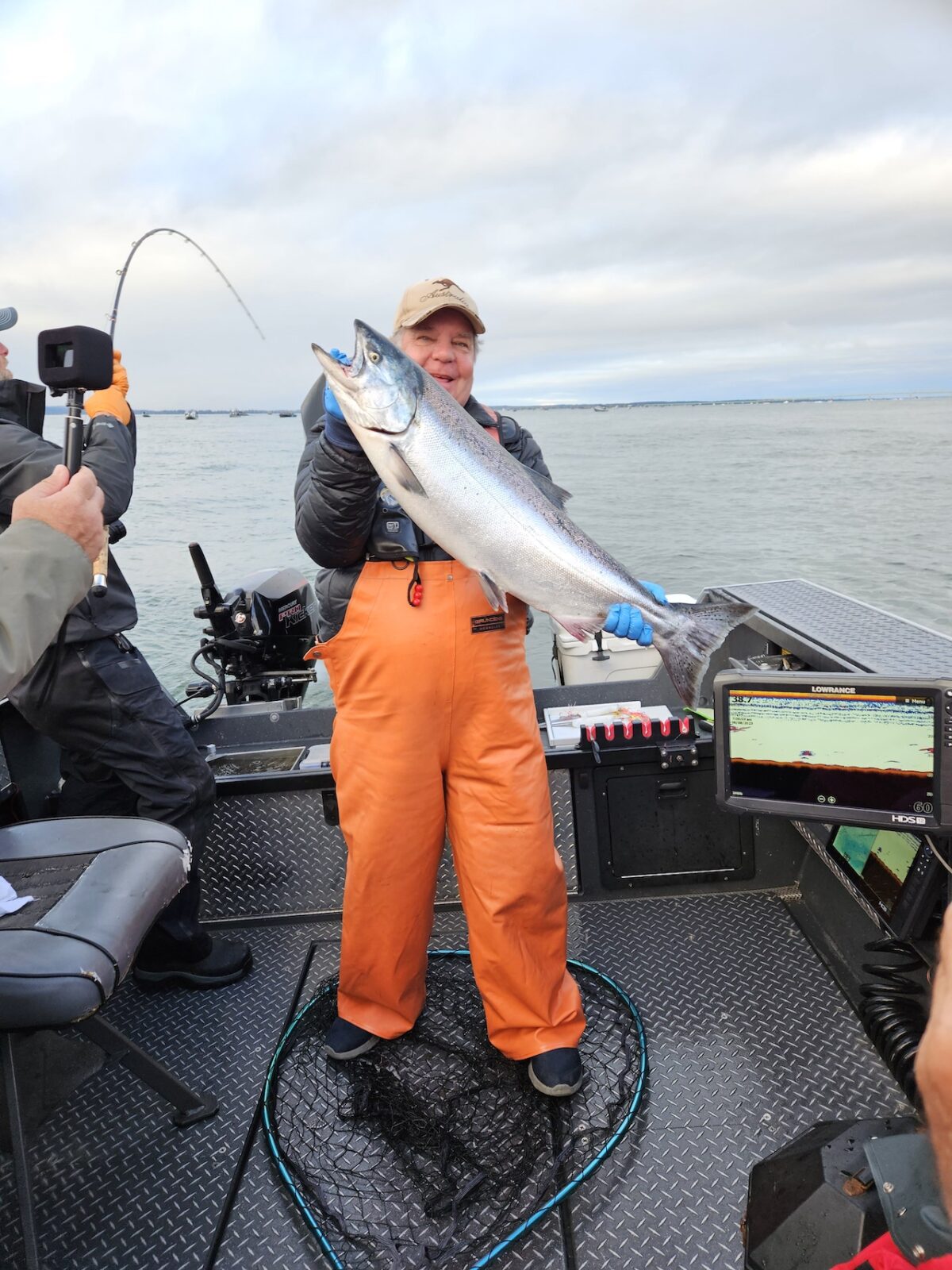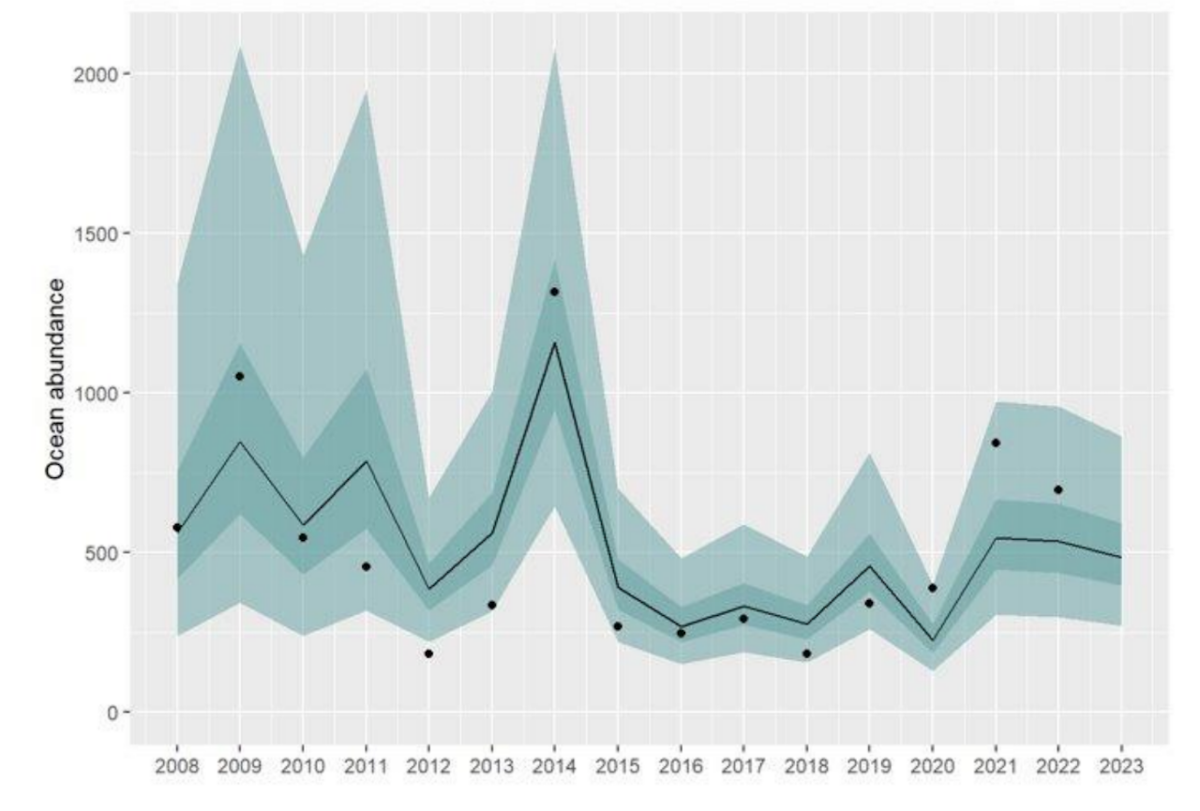
‘Similar’ Columbia Fall Chinook Run Expected In 2024
At the risk of talking forecasts to a region bedeviled by seriously shifting snow expectations – dang you, weathermen, and your school-day-curtailing graphics! – Columbia salmon managers have issued a little-noticed outlook about this year’s fall king run to the big river.
“Fall Chinook returns should be similar to 2023 returns with the exception of BPH stock,” the DFWs posted late last month.

While last year’s forecast called for 554,000 adults back to the Columbia from August through the end of 2023, the return actually came in at 131 percent of that figure, with most stocks coming in above the preseason forecast, according to managers’ preliminary analysis.
It will be a while yet before 2024 stock figures are fleshed out more, but that “similar” is based on 2023 returns in combination with jack returns.
Managers’ preliminary outlook also says this about last year:
“Bonneville Pool Hatchery (BPH) stock appear to have lower jack returns than 2021 and 2022 returns.”
“Upriver Bright (URB) stocks appear to have higher jack returns than the 2022 returns.”
“Pool Upriver Bright (PUB) stocks appear to have similar adult returns to the 2022 returns.”
“Lower River Hatchery (LRH) tule jack returns appear to be similar to the 2022 returns.”
BPH tule struggles are due to health issues that struck a hatchery year-class which led to an early release and apparent poor survival, as evidenced by low jack returns and anticipations that that means fewer adults will return in 2024.
Sharp eyes will also notice that the the DFWs’ preliminary outlook doesn’t mention coho, like it usually does. That’s because state and federal overseers are taking a “new forecasting approach” for hatchery silvers starting this year, the first change in two decades.
A briefing to the Oregon Fish and Wildlife Commission today offers a few more details:
“This change in forecast approach is the first modification to forecast methodologies to Oregon hatchery coho in over two decades. The renewed interest was triggered by forecasts becoming less precise through time, at least partly due to the lack of environmental variability being included in the model and changes in the proportion of the jacks in the population through time.
“ODFW, together with biologists from the Washington Department of Fish and Wildlife explored autoregressive integrated moving average (ARIMA) model structures to evaluate potential modeling approaches. This ARIMA approach incorporated ~1,500 individual models with unique combinations of smolt and jack metrics, and nine marine conditions known to affect salmon survival, to hindcast Oregon hatchery coho abundance over the past 15 years.
“The top preforming models for the 15-year period always included some of the nine environmental conditions, however the conditions changed through time. This demonstrates the adaptability of the ARIMA model structure to environmental changes, a characteristic that is expected to allow for flexibility in a changing environment while still maintaining low forecast error.
“The best preforming model within the ARIMA framework reduced forecast error by approximately 40 percent compared to the prior methodology (Figure 1) and should help the Council manage these important fisheries.”

Should you have more interest in reading about this new model before your fingers become too cold to scroll and/or we all die from wind chill and/or freezing rain and/or a wintry mix and/or snow in the coming days, check out this 52-page methodology review on the Pacific Fisheries Management Council’s website.
The Columbia fall Chinook and Oregon Coast coho forecasts serve as early steps in setting 2024 fisheries up and down the West Coast and upstream, a process that will hit high speed in March and April at North of Falcon.
